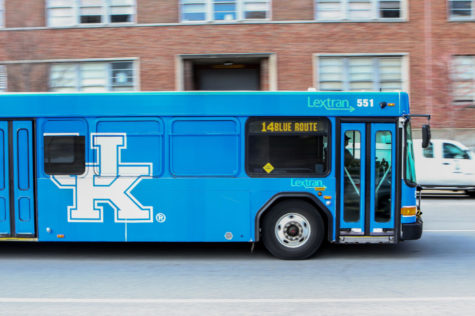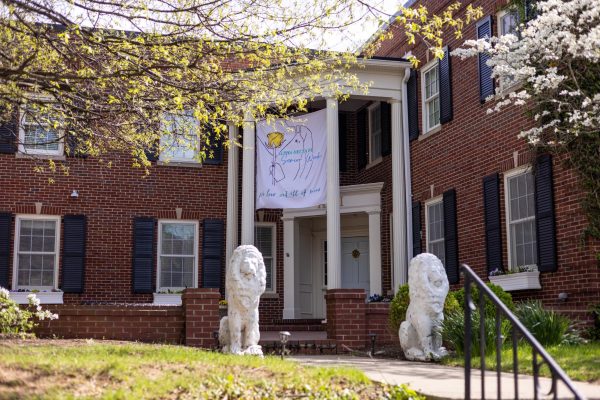National experts question UK’s use of smoke in dorm fire drills
September 17, 2007
Theatrical smoke will roll through the corridors of Ingels Hall tonight in a drill meant to simulate a real fire.
UK fire marshals say the unannounced twist on a fire drill helps prepare students, staff and the fire department for an emergency.
But some national and local experts question whether the practice could create an emergency instead.
“I would be concerned because when you’re in a dorm situation you have different languages, disabilities, health issues and lots of different people coming in and out,†said Ken Farmer, branch chief of prevention and leadership for the U.S. Fire Administration, a division of the Federal Emergency Management Agency. “Not everyone will understand it’s a drill. What if a student went through the smoke and hit something?â€
Sherry Kenyon, secretary and treasurer of the national Center for Campus Fire Safety and fire safety educator for the fire department in Boulder, Colo., said she uses smoke to train resident advisers at the University of Colorado, but they know about it before the drills.
“You have to be really clear on the learning objective in such a drill,†Kenyon said. “I’m afraid that creating a fire situation that people don’t know about beforehand might send mixed messages. I don’t believe in scaring people. No one likes to be taught by being tricked.â€
UK Assistant Fire Marshal Greg Williamson said the university and firefighters aren’t trying to scare anyone by using artificial smoke. He introduced the idea in fall 2006 to make fire drills more realistic.
“We want to train students, but it’s also good training for the fire department,†Williamson said. “They respond to the drill exactly like they would if it were a real fire.â€
“It opens students’ eyes that they are not prepared for a real situation,†he said.
Janice Bishop, a nurse in UK’s allergy and asthma clinic, worries the practice could create a health risk.
“I think they need to tell (students) about the smoke first so that people with asthma can be prepared,†she said. “It could cause asthma to flare up if someone was around a lot of it.â€
Maj. Mike Bossert, a Lexington firefighter who has responded to the UK drills, said he has never personally seen any health problems caused by artificial smoke but thinks the drills are a “fantastic idea.â€
“Sometimes they smoke it up to where visibility is an issue,†he said. “We do this so people can understand what it’s like. The smoke is more for students to experience how thick real smoke can get.â€
In the drills, fire marshals place a smoke machine in the residence hall’s main exit and set off the alarm. The Lexington fire department knows about the drill in advance; the residents do not, Williamson said.
When firefighters arrive, smoke has already been released in the dorm. They search the building as if they’re facing a real fire, making sure everyone has evacuated.
After the evacuation, students are told the smoke is part of an exercise. Fire marshals use the opportunity to teach residents how to safely exit a smoke-filled building.
Williamson said UK uses smoke in three dorms each semester. Tonight’s drill, scheduled for around 7 in Ingels Hall, is the second of the school year.
The first drill, at Keeneland Hall on Sept. 10, offered some learning opportunities, Williamson said.
“One young lady said there was no other way for her to get out when we questioned her as to why she came through the smoke,†he said. “There are three other stairwells she could have exited from.â€
In all, 12 students came through the smoke instead of finding an alternative exit, he said.
While Farmer agreed that using smoke in drills has educational advantages, he said “it’s best not to use it.â€
“The risk outweighs the benefits,†Farmer said. “No fire drill is worth the potential risk of someone getting hurt.â€
Other officials who have experience with fire drills say using smoke could desensitize students to real emergencies.
“There is a higher fatality rate in dormitories and hotels during fire situations because they take the nonchalant attitude that, ‘Oh, this is probably just a drill,’ †said Capt. Ed Moy of the San Francisco Fire Department.
Stu Silberman, superintendent of Fayette County Public Schools, had similar sentiments and said he would not use smoke in school fire drills.
“I think that, at least in my opinion, you don’t want kids thinking you are crying wolf,†he said. “You just run your drills with the idea you’re preparing for the real thing. In my 34 years of experience, I’ve found that if the teachers and staff take it seriously, then the students will too.â€
Bossert, of the Lexington Fire Department, doesn’t think the smoke should affect students’ reactions.
“There is no issue with us crying wolf because if everyone is doing what they’re supposed to be, then everyone would be evacuating during a drill,†he said.
Tiffani Prichard, a psychology junior and RA at Keeneland Hall, said the Sept. 10 drill caused some panic and that some of her residents were in tears.
Daniel Root, a linguistics sophomore and RA at Keeneland, said the explanation after the drill calmed people down.
“I think that if they didn’t explain the smoke it would have been a bad idea,†Root said, “but after the drill the fire marshals had a debriefing outside that explained everything.â€



















































































































































